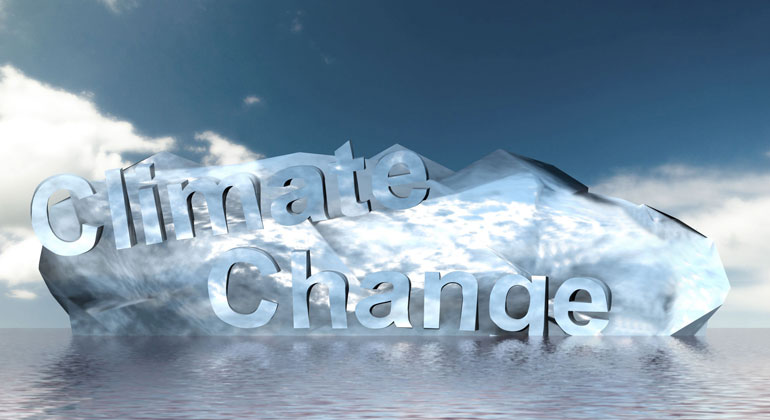Global warming can be limited to 2 degrees with major technological and institutional change: IPCC report
Many pathways to substantial greenhouse-gas reductions are available at relatively little cost, a landmark report by the Intergovernmental Panel on Climate Change (IPCC) shows. Among the options put on the table there are the use of bioenergy combined with carbon capture and storage, and comprehensive pricing of CO2 emissions. The report’s team of authors has been led by Ottmar Edenhofer, vice-director of the Potsdam Institute for Climate Impact Research.
IPCC: Greenhouse gas emissions accelerate despite reduction efforts – Many pathways to substantial emissions reductions are available
A new report by the Intergovernmental Panel on Climate Change (IPCC) shows that global emissions of greenhouse gases have risen to unprecedented levels despite a growing number of policies to reduce climate change. Emissions grew more quickly between 2000 and 2010 than in each of the three previous decades.
According to the Working Group III contribution to the IPCC’s Fifth Assessment Report, it would be possible, using a wide array of technological measures and changes in behaviour, to limit the increase in global mean temperature to two degrees Celsius above pre-industrial levels. However, only major institutional and technological change will give a better than even chance that global warming will not exceed this threshold.
The report, entitled Climate Change 2014: Mitigation of Climate Change, is the third of three Working Group reports, which, along with a Synthesis Report due in October 2014, constitute the IPCC’s Fifth Assessment Report on climate change. Working Group III is led by three Co-Chairs: Ottmar Edenhofer from Germany, Ramón Pichs-Madruga from Cuba, and Youba Sokona from Mali.
“Climate policies in line with the two degrees Celsius goal need to aim for substantial emission reductions,” Edenhofer said. “There is a clear message from science: To avoid dangerous interference with the climate system, we need to move away from business as usual.”
Scenarios show that limiting the increase in global mean temperature to two degrees Celsius with a likely chance, means lowering global greenhouse gas emissions by 40 to 70 percent compared with 2010 by mid-century, and to near-zero by the end of this century. Ambitious mitigation may even require removing carbon dioxide from the atmosphere.
Scientific literature confirms that even less ambitious temperature goals would still require similar emissions reductions.
For the report, about 1200 scenarios from scientific literature have been analyzed. These scenarios were generated by 31 modelling teams around the world to explore the economic, technological and institutional prerequisites and implications of mitigation pathways with different degrees of ambition.
“Many different pathways lead to a future within the boundaries set by the two degrees Celsius goal,” Edenhofer said. “All of these require substantial investments. Avoiding further delays in mitigation and making use of a broad variety of technologies can limit the associated costs.”
Estimates of the economic costs of mitigation vary widely. In business-as-usual scenarios, consumption grows by 1.6 to 3 percent per year. Ambitious mitigation would reduce this growth by around 0.06 percentage points a year. However, the underlying estimates do not take into account economic benefits of reduced climate change.
Since the last IPCC assessment report, published in 2007, a wealth of new knowledge about climate change mitigation has emerged. The authors of the new, fifth Working Group III report have included about 10,000 references to scientific literature in 16 chapters.
Stabilizing greenhouse gas concentrations in the atmosphere requires emissions reductions from energy production and use, transport, buildings, industry, land use, and human settlements. Mitigation efforts in one sector determine the needs in others.
Cutting emissions from electricity production to near zero is a common feature of ambitious mitigation scenarios. But using energy efficiently is also important.
“Reducing energy use would give us more flexibility in the choice of low-carbon energy technologies, now and in the future. It can also increase the cost-effectiveness of mitigation measures,” Pichs-Madruga said. Since publication of the Fourth Assessment Report there has been a focus on climate policies designed to increase co-benefits and reduce adverse side-effects.
Land is another key component for the 2°C goal. Slowing deforestation and planting forests have stopped or even reversed the increase in emissions from land use.
Through afforestation, land could be used to draw carbon dioxide from the atmosphere. This could also be achieved by combining electricity production from biomass and carbon dioxide capture and storage. However, as of today this combination is not available at scale, permanent underground carbon dioxide storage faces challenges and the risks of increased competition for land need to be managed.
“The core task of climate change mitigation is decoupling greenhouse gas emissions from the growth of economies and population,” Sokona said. “Through providing energy access and reducing local air pollution, many mitigation measures can contribute to sustainable development.”
“Climate change is a global commons problem,” said Edenhofer. “International cooperation is key for achieving mitigation goals. Putting in place the international institutions needed for cooperation is a challenge in itself.”
The Working Group III report consists of the Summary for Policymakers released today, a more detailed Technical Summary, the underlying 16 chapters, and three annexes. Working Group III chapter teams were formed by 235 authors and 38 review editors from 57 countries, and 180 experts provided additional input as contributing authors. More than 800 experts reviewed drafts of the report and submitted comments.
“The IPCC has been able to recruit from a diverse and immensely accomplished team of authors who are the leading experts in their respective fields,” said Rajendra Pachauri, Chairman of the IPCC.
“I am grateful to the many contributors who have provided their time and talent for the preparation of this report. Their work has enabled the IPCC to cover a broad perspective while assessing climate change mitigation on a comprehensive basis,” he said. “The Working Group III report is a valuable input to the Synthesis Report, which is to be completed in October 2014. I am also certain that the contents of the report will be used productively in the negotiations under the UNFCCC.”
The Working Group III Summary for Policymakers, full report and further information are available at www.mitigation2014.org and www.ipcc.ch. The full report will be posted on these websites on Tuesday 15 April.








